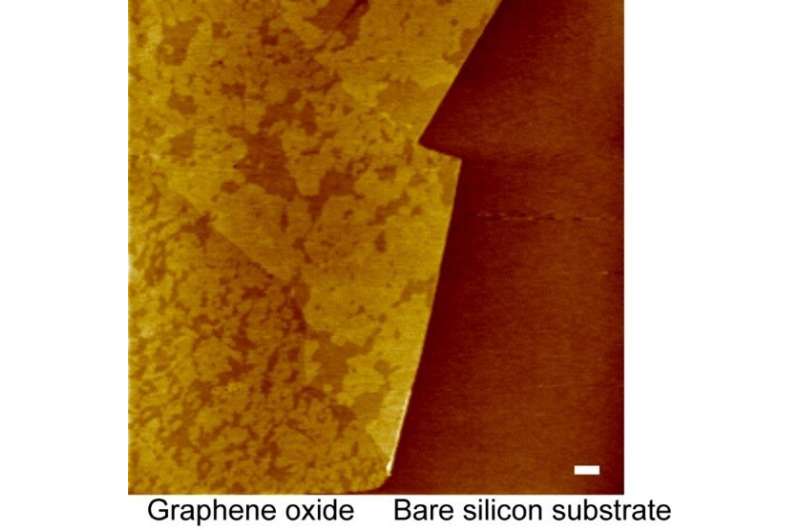This article has been reviewed according to Science X's editorial process and policies. Editors have highlighted the following attributes while ensuring the content's credibility:
fact-checked
trusted source
proofread
Researchers investigate 'lipid raft' phenomenon on nanocarbon surfaces

A research team from the Department of Applied Chemistry and Life Science at the Toyohashi University of Technology has discovered a phenomenon in which specific lipids were concentrated on graphene oxide in a multicomponent lipid bilayer membrane serving as a cell membrane model. The findings are published in the International Journal of Molecular Sciences.
The research team also clarified the mechanism by which the components of "lipid rafts" gather (where important cell membrane reactions such as neurotransmission and metabolism occur) due to the surface characteristics of graphene oxide. This discovery is expected to be utilized in fundamental technologies for concentrating and separating the lipids and proteins in cell membranes, important targets for drug research.
Transportation of the substances, information, and energy necessary for activities in and out of cells are conducted through cell membranes. These exchanges are deeply involved in neurotransmission, metabolism, and viral infections, making them important research targets in the biology, medicine, and drug-discovery fields.
The fundamental structure of the cell membrane is a lipid bilayer membrane. Specific lipids and membrane proteins gather through the lateral diffusion and aggregation of molecules within the membrane. Such regions are called lipid domains, which in turn control and improve the efficiency of the reactions occurring in the cell membrane. One representative example of the lipid domain is the "lipid raft," which is rich in sphingolipids and cholesterol. New technologies for controlling and arranging the positions of lipid domains on a solid substrate are demanded for the biosensing and screening of lipids and membrane proteins.
This research team fabricated an artificial lipid bilayer on a graphene oxide monolayer deposited on a silicon substrate. They discovered for the first time that the lipid domains were concentrated on the graphene oxide. Graphene oxide has a structure in which hydrophilic oxygen functional groups are added to graphene (a monoatomic sheet material of carbon).
In a two-component lipid bilayer consisting of two types of phosphatidylcholines with different fluidities, majority of the low-fluidity gel phase domains in the lipid bilayer membrane gathered on the graphene oxide. In a three-component mixed lipid bilayer membrane of sphingolipids, cholesterols, and phosphatidylcholine, many lipid raft components were present on the graphene oxide.
Professor Ryugo Tero, the leader of the research team, explains, "Regardless of the lipid composition, the less fluid lipid domains clustered on the graphene oxide. This was owing to the presence of a mixture of hydrophilic and hydrophobic regions on the graphene oxide surface on a nanometer scale. The initial process of the domain formation in the lipid bilayer occurred preferentially in the hydrophobic regions of the graphene oxide."
The research team states that controlling the positions of the lipid domains on the solid substrate is necessary for arranging the membrane proteins with a high affinity for those lipids in the same locations. This discovery is useful for fundamental technologies in the fields of biosensing and screening targeting membrane proteins.
Furthermore, the research team believes that the same method can be used to collect biochemically important lipid components such as glycolipids as well as the lipid raft. They expect that this will be useful in the development of techniques for concentrating and purifying the rare lipids and membrane proteins in cell membranes.
More information: Ryugo Tero et al, Domain Localization by Graphene Oxide in Supported Lipid Bilayers, International Journal of Molecular Sciences (2023). DOI: 10.3390/ijms24097999
Provided by Toyohashi University of Technology



















